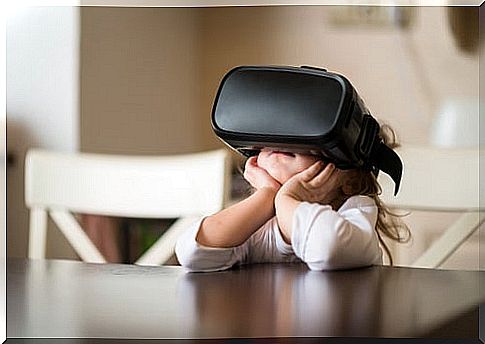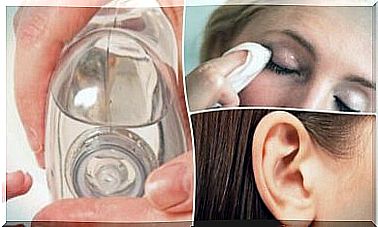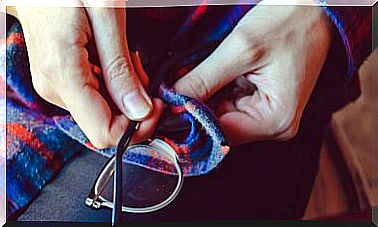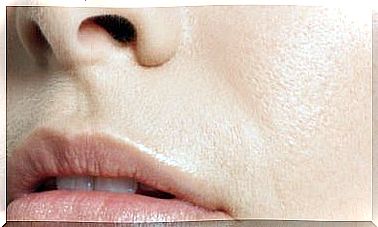Interview With Manuel Antonio Fernández: “Neuropaediatrics Is Fundamental”
Neuropaediatrics treats a large number of pathologies in our newborns, children and adolescents. Pediatric neurology specialists such as Dr. Manuel Antonio Fernández, for example, remind us of the relevance of this area focused on disorders of the nervous system of children.
However, a large part of the parents are completely unaware of the existence of these specialists. Neurological problems are almost always very mild, but also common: motor and communication delay, sleep problems, headaches, hyperactivity …
These types of conditions almost always generate many doubts and uncertainty in families. Knowing that we can count on this type of specialized professionals is decisive; In this way, we can treat a large number of clinical realities early to promote better development in children.
We talked about this important topic with one of the most recognized exponents in this field: Dr. Manuel Antonio Fernández.
Interview with Dr. Manuel Antonio Fernández
If we talk about neuropediatrics, it is almost inevitable not to refer to Dr. Manuel Antonio Fernández. Recognized as the best pediatrician in Spain in the Doctoralia Adwards and one of the most appreciated professionals in this area by thousands of families and other professionals who emphasize above all his attention, closeness and extensive experience.
Behavioral and learning problems, autism, attention disorder with or without hyperactivity, babies who take a long time to stand up or crawl … As Dr. Férnández explains, childhood neurological problems can be very broad, and neuropediatrics best tool to detect, treat and accompany the family in this type of approach.
Knowing that everything is going to be fine, that we have real experts in this specific field of pediatrics is, without a doubt, a great help. We talked about neuropediatrics with Dr. Manuel Antonio Fernández.

P. What is pediatric neurology?
Did you know that most parents are unaware of the existence of pediatric neurologists? One of the first problems we encounter in this world is that parents don’t even know what a pediatric neurologist is. Sometimes they have not heard this word. It’s critical to clarify this so parents know where to turn when their child is in trouble.
Neuropediatrics or pediatric Neurology is the specialty within pediatrics that deals with supervising the correct development of the nervous system and treating the alterations that it may suffer. The developmental period encompassed by child neurology, such as pediatrics, goes from the moment of conception to the end of the process. This can reach beyond the age of 18.
Q. So when do parents have to take their children to the pediatric neurologist?
Whenever there is a need to verify the existence of normal neurological development or any sign of disease that affects it appears. Examples commonly known by parents of these situations are in common neurological pathologies such as:
- Epilepsy
- Migraines
- Febrile seizures.
- Sleep disorders.
Other conditions that are also frequent but that parents relate little to the pediatric neurologist are those related to neurodevelopmental disorders:
- The maturational delay.
- Autism and other autism spectrum disorders such as Asperger’s syndrome.
- ADHD (Attention Deficit, Hyperactivity).
- Learning disorders like dyslexia.
- Communication problems such as language delay.
- Tics and other movement disorders such as stereotypes or tourette syndrome.
Faced with the existence or suspicion of any of these problems, the pediatric neurologist is the most appropriate specialist to attend. In general, it can be summarized in any problem that causes difficulties in academic performance, social relationships or behavior and behavior.
P. What are the most common neurological problems in children today?
Have you ever imagined that the most common childhood neurological problems are those related to learning and behavior?
The important emotional, social and personal consequences that this type of problem can cause in the long term make its early detection and treatment essential. We cannot forget other very frequent ones such as headaches, epilpesia or sleep disorders.
P. And the most serious?
Although the above can have serious consequences, those that are life-threatening are generally brain tumors, genetic diseases and mainly metabolic diseases.
Childhood brain tumors are a common cause of illness and death in children. In fact, they are the second leading cause of illness in children under 15 years of age. They are more common than in older people.
Most serious genetic diseases that occur in childhood are considered rare diseases. They are many and rare. Little is known about them and the vast majority lack treatment. Some examples are Rett syndrome, Alport syndrome, or type I neurofibromatosis, but there are hundreds.
Q. Could you explain the most common causes of neurological problems in children?
Most of these problems are based on an alteration in the functioning of the nervous system. This alteration can be in the structure or in the operation.
We can imagine this system as a big city. It has a number of visible structures such as buildings, streets, roads, and bridges. Vehicles such as cars, motorcycles and buses carry people on these roads.
These people would be comparable to the neurotransmitters in our brain. They are in charge of taking our thoughts, the orders of the brain, to their destination so that they are carried out.
Any problem that damages these structures or hinders the movement of passengers through transport routes, can end up causing problems and even collapse the city. Similarly, for neurological development to be correct, all these mechanisms must work correctly.
Q. Why have diagnoses of this type of problem increased in relation to previous times?
Studies say that the number of children with developmental disorders has multiplied in recent years. It is true, but this is not due to the fact that there is an epidemic or that they have increased, but because of their better knowledge, greater awareness and, above all, the advances that technology has allowed us to achieve in areas such as genetics or tests of image like resonance for example
The discoveries made thanks to the studies of DNA and the genome have made it very easy for us to find the cause of the problems of many children that were not known before. It has also been possible, thanks to these advances, to know much better the causes, symptoms and prognosis of many neurological diseases that were not even known before.
Finally, advanced societies like ours are concerned with helping people’s full development, and one of the fundamental factors for this is helping them develop their full potential. We live in a very technological world, with high demands, demands and competitiveness. The ability and speed of learning become, therefore, fundamental factors for success and personal development.
The world is infinitely more and better communicated than just 10 years ago. 5G also represents a huge leap in the possibilities that we have at our fingertips. All this facilitates a better development of health knowledge and especially of those related to neurosciences.
Q. Can you explain us how it is detected and diagnosed?
For the detection and diagnosis of most neurodevelopmental disorders we must base ourselves on the analysis of their consequences at the level of academic performance, social relationships and behavior or behavior patterns.
When a problem appears in these three areas, we have to investigate. It is not enough to conduct an interview with the family and observe the child. We have to do tests that can objectively measure what we need.
In some cases, imaging tests such as CT or brain MRI may be necessary. In other situations, we may need to perform an EEG or some analytical test. You have to decide based on each case. Despite this, new technologies allow us to analyze and measure things that were unthinkable until a few years ago.
Virtual reality allows us to measure mental functions such as selective attention, control of mental impulses, the speed at which our brain processes information and even the level of activity of our body. This means that we can be perfectly clear if a child has attention deficit or hyperactivity without doubts. It no longer depends on the opinion of the parents or the professional’s assessment exclusively
This is an example of what technological advances can contribute to the development of medicine and neurosciences.

P. In your experience, how do parents handle the detection of a neurodevelopmental problem in their children?
The situation depends a lot on the specific type of neurodevelopmental disorder we are talking about. It is hard for all parents to have confirmation that their child has some kind of problem. That’s clear. But the way to deal with it is very different depending on whether it is an attention deficit, autism, Asperger’s … In addition, you find some families with very particular situations.
There are cases where parents know that their child has a major problem but cannot figure out which one. After many consultations with specialists of all kinds, there are no clear answers. They have carried out a multitude of tests that have not yielded any definitive results.
In these cases, the parents have already more than assumed the problem. When you do manage to name it, many of them are relieved. In other cases, they don’t need a name and focus on the help they can give your child.
There are aspects closely related to the personality of each family that makes the needs can be very different when they face very similar problems.
P. Finally, could you give some tips or advice to the parents?
Do you think it is normal for a 17-month-old child not to be able to stand up? No, it is not. Do you know that popular saying that you hear so much about “comparisons are hateful”?
Well, I completely disagree when we talk about neurodevelopment. It is evident that each child has his own rhythm when it comes to developing, growing and maturing. Even so, it is no less true that the comparison is the initial basis to be able to detect problems as soon as possible.
Years ago I had a little girl in my office who was referred to me by a pediatrician from the emergency room. The parents had taken her because she had a cold and a fever. When the pediatrician saw her, she was in her cart. He told the parents to take it out to weigh it before exploring it. The parents’ response was that they couldn’t put her on the weight because she couldn’t stand up. My partner was alarmed and after reviewing her, she explained to the parents that the girl needed to be seen by a pediatric neurologist. That situation was not normal.
I do not understand how her family pediatrician did not detect the problem, but after studying it, it was a rare and serious genetic disease. Rett syndrome is a degenerative pathology that severely affects development.
The best recommendation I can give parents is that they are up to date on the path that their child’s development should follow and consult with a pediatric neurologist in the event of detecting any alteration.








